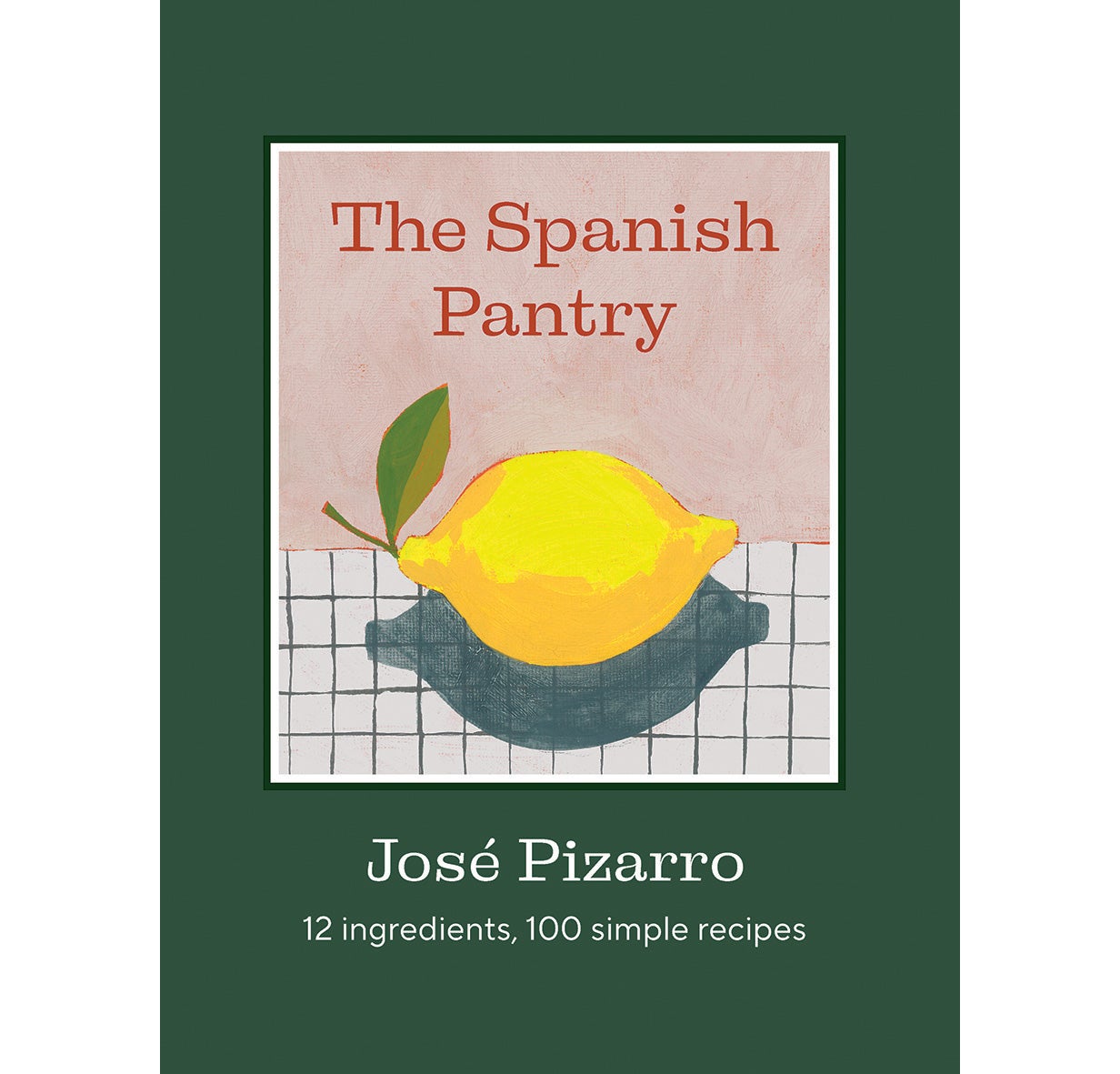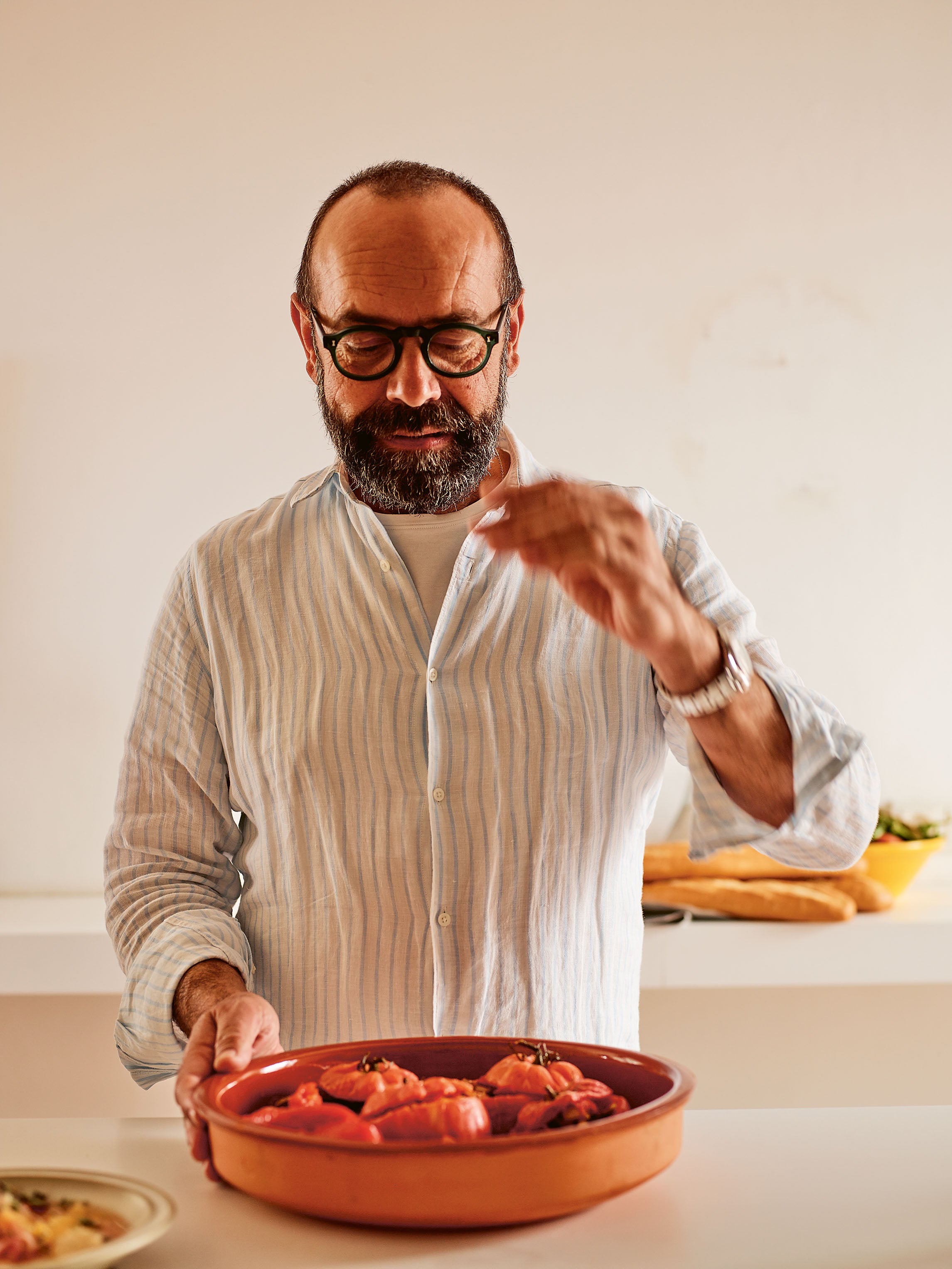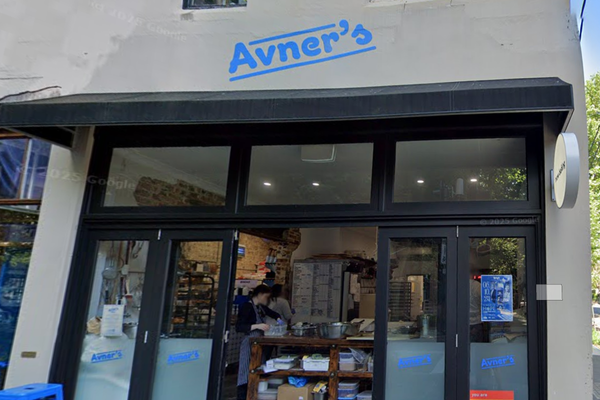
Anyone can master the basics of Spanish cuisine at home, says famed chef José Pizarro – with some key ingredients, done right.
“We know Spanish food is very popular now, since so many very creative chefs have been doing more irregular food – but the reality of Spanish cuisine is the simplicity,” says the 53-year-old restauranteur. “It’s all about ingredients that are top bar by themselves.”
Originally from a rural village near Cáceres, Extremadura, Pizarro has lived in London for almost 25 years and now has eight restaurants under his name.
A regular guest on BBC’s Saturday Kitchen, ITV’s This Morning and Channel 4’s Sunday Brunch, Pizarro has become known to many as the Godfather of Spanish cuisine in the UK.
His latest book, The Spanish Pantry, focuses on ingredients key to the cuisine, from chorizo, jamón and Manchego to almonds, chickpeas and saffron. Cutting it down to just 12 items was “challenging”, he says, but everything included is accessible, easy to find and “the recipes are very easy for people to cook”.
So what’s his advice for using some of the key ingredients correctly?
Choose the right tomatoes for the right dish
Tomatoes are at the heart of so many Spanish classics, from gazpacho to pan con tomate, and you’ll often find them alongside fish dishes.

But firstly, how do you pick the right ones?
“There are so many bad tomatoes around,” says Pizarro. “For me, the tomato is about the juice and the smell. If you can see all the tomatoes looking a little different [rather than uniform] then it’s a good tomato. They are not made in a laboratory.
“But wait until the season comes and just buy the tomatoes where they grow in their proper place. We are lucky enough that we can get very good tomatoes here in the UK, but the tomatoes that grow under 40C are always going to taste much, much better. So Spain, Italy… as a chef, you just want to cut them in the middle, good extra virgin olive oil and some good salt, and life is good!”
Use vine tomatoes for soups and sauces, he suggests, “Because they have the perfect balance of liquid inside”, while the big, round tomatoes are best for salads.
Roast peppers to get the best flavour
From stews to seafood dishes, blistered Padrón peppers doused in olive oil and eaten as tapas, and peppers stuffed with slow-cooked ragu (pimientos rellenos), they’re essential to Spanish cooking.
Bell pepper season is coming up. “I cannot wait to have one in the oven – a little bit of oil and salt and roast them,” says Pizarro. “That is happiness on my plate!
“I think peppers are so nice and versatile. For me, roasting definitely gets the best flavour.”

But to get tasty peppers for Spanish cuisine year-round, he suggests sourcing piquillo peppers in jars. “They are really good for many things, salads, stews.”
Don’t rush caramelised onions
Sofrito is a classic base made by slowly caramelising onions with garlic, tomatoes and olive oil, but slow-cooking onions is an art form – and should take time, says Pizarro.
“I do white onion, always Spanish onion, sliced very, very thin. Plenty in a big pan, just a little bit of salt and extra-virgin olive oil and cook on a very low heat for a very long time – more than an hour.
“What we are looking for is to bring the sugars out. You will have the natural sugar from the onion coming out in the water, and we are cooking those onions with that liquid, [that’s] when you see the onion really melts down.
“I just take off the lid and put the heat up. When you put the heat up, what we are doing is evaporating the liquid and caramelising the sugar.”
It may take a long time but the results are worth it, he says, and they can be kept in the fridge for a couple of weeks or more. “I normally have my caramelised onions at home on a canape or on toast with cheese, melted down and it’s absolutely delicious.
“My mum always says that food needs time – you cannot accelerate food. We really cannot.”
Pack flavour into rice
Arguably the most famous of Spanish dishes, paella has become a symbol of the country’s cuisine around the world.
“For me, rice is one of my favourite things – I get lost in my house in Spain, sometimes people are looking for me, they say, ‘What have you been doing for three hours?’ I say, ‘Look, I have just been cooking our lunch – a simple rice.”
For me, rice is one of my favourite things – I get lost in my house in Spain, sometimes people are looking for me, they say, ‘What have you been doing for three hours?’ I say, ‘Look, I have just been cooking our lunch – a simple rice
Whether it’s paella, or another rice dish (sobrasada rice with crispy artichokes is a top seller across the José Pizarro restaurants), the most important thing is the stock.
“The stock is what makes or breaks it, it brings everything to the rice. You need to take your time and you need to make your stock absolutely delicious, because rice just absorbs all the flavour. When I do my stocks, I use the same spices in the stock that I’m going to use in my dish.
“That is how I spend my time and I have to say, it’s very therapeutic,” he says. “The rice is going to take only maybe 20 minutes to cook, but the time that you do your stock, your garnish, it takes more than two hours easily.”
Buy a good rice. “That is principle, all the rice the same size and not too many broken grains, but what makes the rice, for me, is the stock.” So buy good ones, or make your own – a vegetable one is very versatile.
“You can do a very strong vegetable stock where I burn my onions, it gives a very good balance of bitterness to the stock. I burn the onions first, and then I caramelise the rest of the ingredients for a very long time. The balance of the caramelised vegetables with the burnt onions is really yummy.”
Don’t overcook your tortilla
“For me, the Spanish omelette has to be with onions, because I grew up with the tortilla with onion,” he says. “Good eggs – people need to spend good money on eggs. The base with olive oil, and then you just put in a hot pan, if you want to have to have a runny one then turn over very quick. It will take a minute and a half and it’s going to be nice and caramelised outside, and beautiful and runny inside.”
His own mother always cooked tortilla a little more, though. “All my life, because my mum cooks her’s perfectly moist inside – nothing wrong with that.”
‘The Spanish Pantry’ by José Pizarro (Quadrille, £28).







